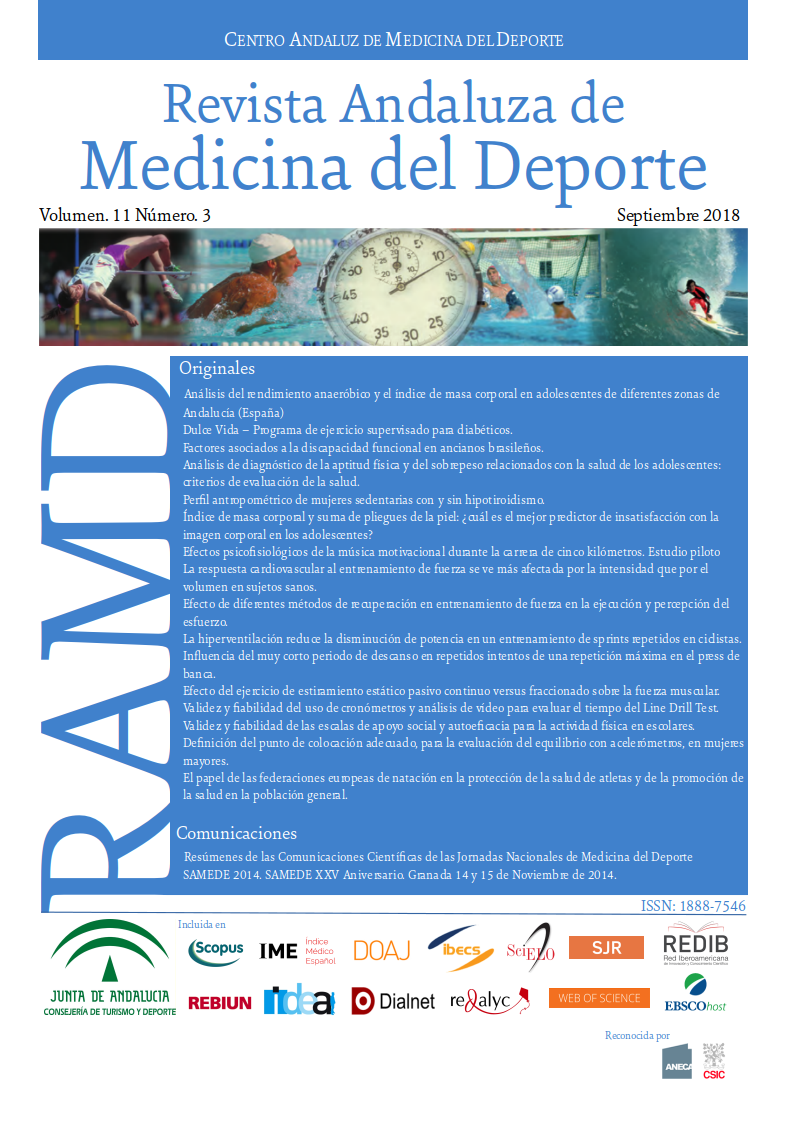Diagnostic analysis of physical fitness and overweight related to adolescent health: Evaluation criteria for health
Keywords:
Salud, Sobrepeso, Adolescente, Composición corporal Health, Overweight, Adolescent, Body composition Saúde, Sobrepeso, Adolescente, Composição corporal
Abstract
Objective: The aim of this study was to determine the association between physical fitness, socio-demographic factors and overweight prevalence of adolescent schoolchildren from urban and rural cities.
Methods: The study population was made up of 377 male and female teenagers 14–17 years, enrolled in randomly selected public schools in urban and rural areas the northern Brazil. Socioeconomic status, flexibility, abdominal strength, endurance and cardiorespiratory fitness were measured.
Results: The students from urban areas had a 55% (confidence interval of 95% = 1.12–2.12) more likely inadequacy physical quality and area of residence when compared to the rural area students. There was an association between muscular strength and endurance and area of residence. These odds ratio results demonstrated that the chances the students presented with inadequacy in this variable were 8.99 (confidence interval of 95% = 1.12–72.30) times higher among schoolchildren in rural compared to urban area. It was observed that 25.1% of teenagers found themselves with inadequate body composition, and the proportion of teenagers with inadequate body composition was higher (p < 0.05) for males (32.3%) compared to females (18%).
Conclusion: It was concluded that there was an association between components of health related fitness and area of residence in the current study groups.
Published
2018-04-20
Section
Originals


